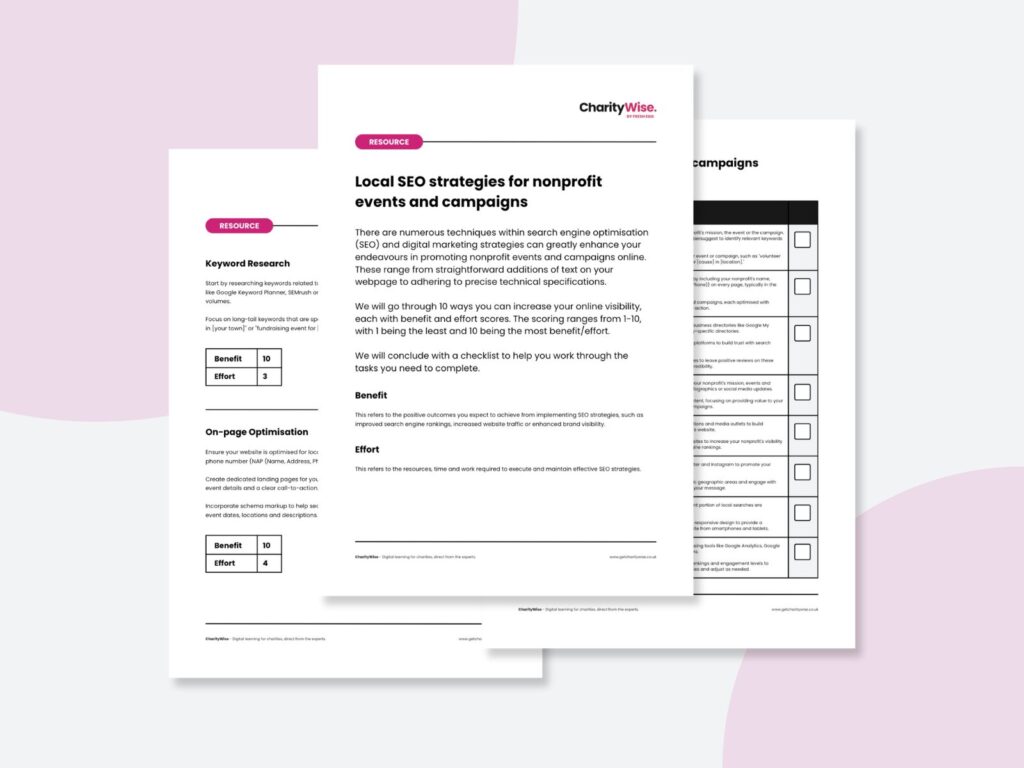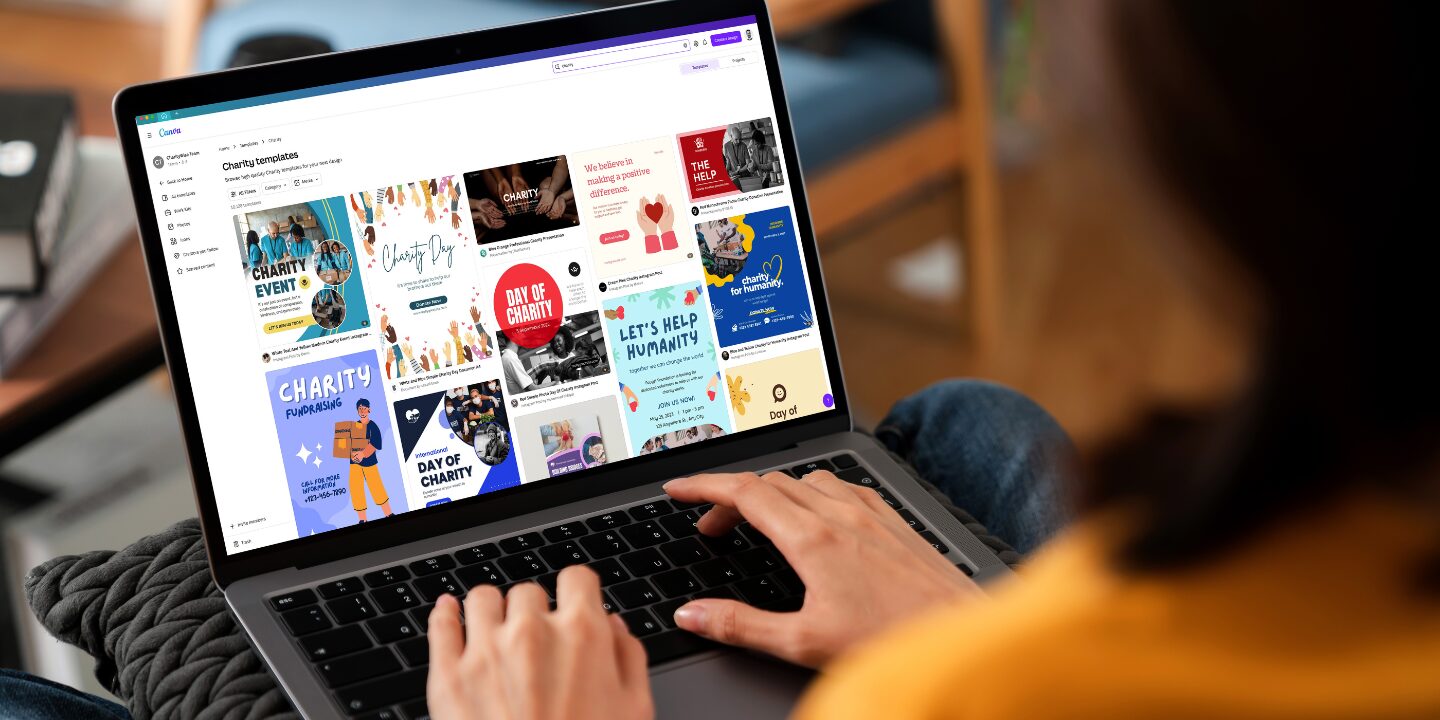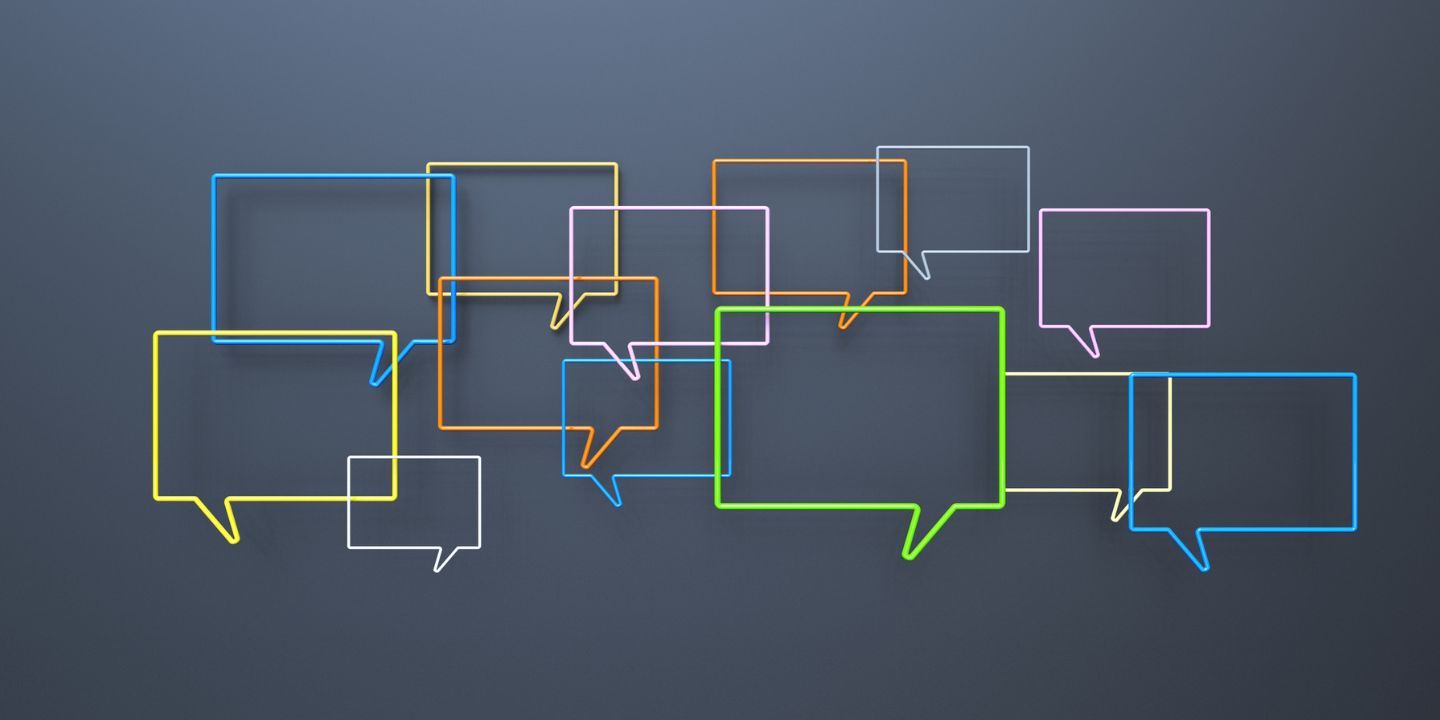

User research is one of the most valuable tools for understanding the behaviours, needs, motivations, preferences, wants, and interactions your supporters and beneficiaries have with your charity.
When conducting an interview, ensure that you write a guide of the main questions and topics you want to ask about, but know that a successful interview is also about rapport with your participant.
To build this and get the most out of the research, you don’t need to follow your guide like it’s a script; dig into topics that users will bring up while talking to them and try to keep the session structured but conversational.
To get the right insights, you need to ask the right questions. In this guide, we share some best practise for the types of questions you could ask as well as some examples of how to ask them.
“Discovery” questions
To keep a conversation flowing, you’ll need to ask open questions that your participant will need to elaborate on beyond a “yes” or “no”. Avoid starting questions by “did you” / “have you” / “were you” and replace them by “why”, “how”, etc.
- “Tell me about…”
- “Why do you…”?
- “What is / are…?”
- “What… do you use / do ?”
Silence and exploratory responses
It is no great surprise then that during interviews it can feel easy and natural to fill any gaps in conversation with commentary – anything to avoid the awkward silence. However, this commentary fills any natural breaks and risks influencing people’s behaviour by distracting them from their train of thought. With that in mind, remember that silence can be golden in research sessions.
If you want your participant to expand on their answer, allowing for a moment of silence can allow and encourage them think of any additional information they want to share. Show you are interested in what they have to say by allowing them time to articulate their thoughts.
You can also imply that you would like your participant to expand on their answer by using “Mmm?” or “Really?”. Avoid nodding along with their answers to encourage them to continue, as this may lead them into feeling they’re doing a “good job” and exaggerate their responses with your perceived feedback in mind.
Understanding tasks or experiences
During interviews, you might want to know what your participants experiences have been like (for example, when interacting with your helpline). You may also want to know how they perform certain activities, so that you can find out how your charity can help. These could apply to your website, but can equally apply to any task or interaction.
- “How do you [task]…?” (direct)
- “Describe how you would [task]?” (indirect)
- “What are all the things you need to do and know in order to [task]?”
- “What is the difference between [task 1] and [other task]?”
- “How would you explain [task] to a friend who knows nothing about it?”
Talking about problems and pain points
Some of the key insights you’ll want to understand are the points that are challenging for your supporters or beneficiaries. We have found that sometimes, when speaking about a charity that has supported them in the past, some participants find it difficult to speak truthfully about any problems they encountered with the charity. With this in mind, it is important to ensure you dig deep when talking about pain points.
- “What’s the hardest / most frustrating part about …?”
- “How was that different to what you expected?”
- When an issue is mentioned: “How does [issue] impact you?”
- When an issue is mentioned: “How did you solve / get around that issue?”
Opinions / points of view / attitude and projections
Asking for opinions can give valuable insight into someone’s experience. Ensure you use a neutral tone when asking directly for opinions, as small changes in tone or phrasing can make a participant feel judged or can easily lead a participant into answering in a particular way. Also be aware that courtesy bias from the participant may mean that they give a more “socially acceptable” answer than their own true opinion.
- “What do you think about …?”
- “What do you like/dislike about…?”
- “What would your friend/family member/colleague think of that?
Recalling the past / anticipating the future
If you want an honest view of how a participant might do something, it’s best to ask them how they have done it (or something similar to it) in the past. Humans are notoriously bad at predicting what they would do or predicting the future.
You can ask people about events in the past. Be careful though: any event prior to a few days in the past might be distorted. People are Lazy, Forgetful Creatures of Habit. Also note that people have a hard time projecting in the future so, again, treat the replies to those kinds of questions accordingly. More on that in Rikka’s article about why collective past behavior in interviews works better.
- “Have you been in a situation when you …, what did you do?”
- “Tell me about your most significant/ memorable experience/interaction with…?”
- “Have you seen/done something like this in the past? What was that like??”
Following up
One thing that might feel difficult in an interview is asking for clarification. It’s natural to want to continue a conversation without going back and showing that you didn’t fully understand, but it’s hugely beneficial to follow up on these points to gain the maximum insight from your participant. You don’t need to appear to be the expert on the topic they’re discussing.
- “You mentioned [xxx], can you tell me more about it?”
- “That’s interesting. Could you elaborate on that / give me an example?”
- “What did you mean by [xxx]?”
One of the most powerful ways of following up is simply asking “why?”. Even a small, seemingly insignificant part of a person’s experience might have an insightful or surprising background behind it.
Digging further
The beauty of interviews is that you sometimes get nice surprises when people bring up topics you didn’t think about. Those sentences let me come back and dig a little bit further in those topics.
- “Why”, yes, the all powerful why, as simple as that.
- “How come?” also works
- “You mentioned [ xxx ], what’s the reason for that?”
Rephrasing / interpreting / mirroring
These sentences help to check if you understood correctly . They also let you give a gentle nudge to again, dig a little bit further into a specific topic you’re interested in:
- “Sooooo, you are saying that [ xxx ] ?” + wait
- “It sounds like you are saying [ xxx ], is that correct / did I understand correctly?”
- Mirroring: repeat part of the sentence with a question mark. For example: “I had problems using that part, I didn’t understand what the button did, it was quite frustrating for me” would become “hum, frustrating?” (you need to convey the question mark when you talk). Usually this helps dig further into a feeling.
Recalling past experience
In the interview questions you sometimes ask directly to recall past events. But this method can also be used as a follow-up question.
- “Please give me / think of an example of [ xxx ]?”
- “Show me how you did [ xxx ]?” (if you can ask them to show them their screen and do the task for example)
One Last Thing?
After you thank the person, finish the interview with an open question. This allows the user to talk about a topic you may not have thought about when preparing the guide.
- “Is there anything you would like to add?”
- “Would you like to talk about a specific topic before we finish?”
- “Any questions you would like to ask me about the project?”
Usually people will say no, so wait. Then they think a little bit and actually have things to add. So here again, don’t underestimate the power of silence, don’t turn the recorder off. A lot of people will give you interesting feedback once the interview is “finished”. They are more relaxed and might speak more freely, especially at the end of the interview.
The Power of Silence
Silence is powerful. An interview is about actively listening. The person you interview might sometimes need time to collect their thoughts. Wait for the person to complete or continue. It might feel awkward but it’s powerful.
If someone says no, then remember to wait a little bit. Usually the “no” turns into a “actually” + interesting conversation about a point you didn’t cover in your interview.
If you struggle with this, my fun advice: count in your head, the same way you count when lightening strikes: 1 Mississippi, 2 Mississippis… up to 5 Mississippis. Eventually, you will get more comfortable with silence.
Digital toolkit
WordPress glossary (download)
- 8 July 2024
- 5 min read
Local SEO strategies for nonprofit events and
- 22 April 2024
- 4 min read
Campaign tagging for Google Analytics (GA4) –
- 22 April 2024
- 2 min read







